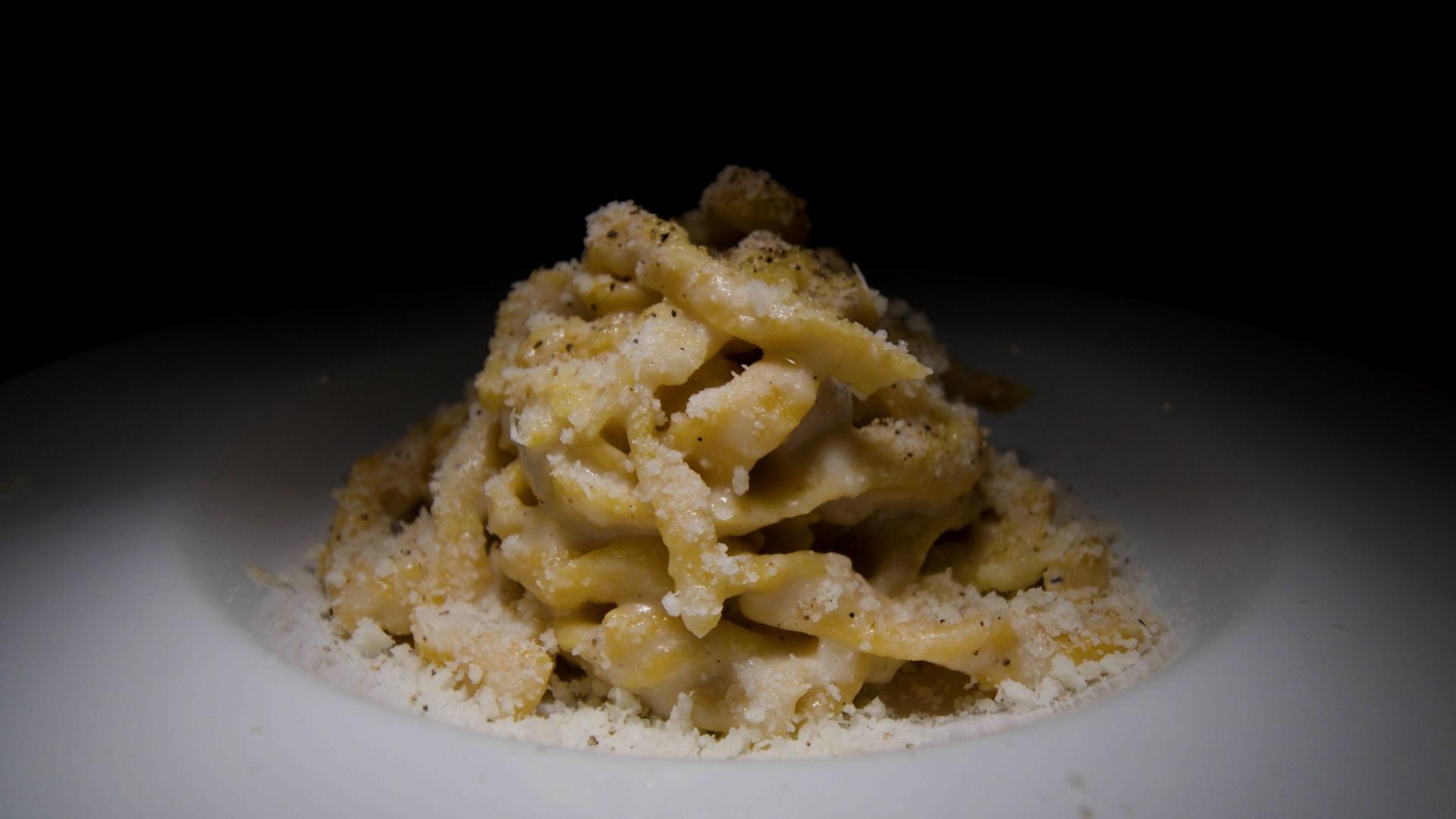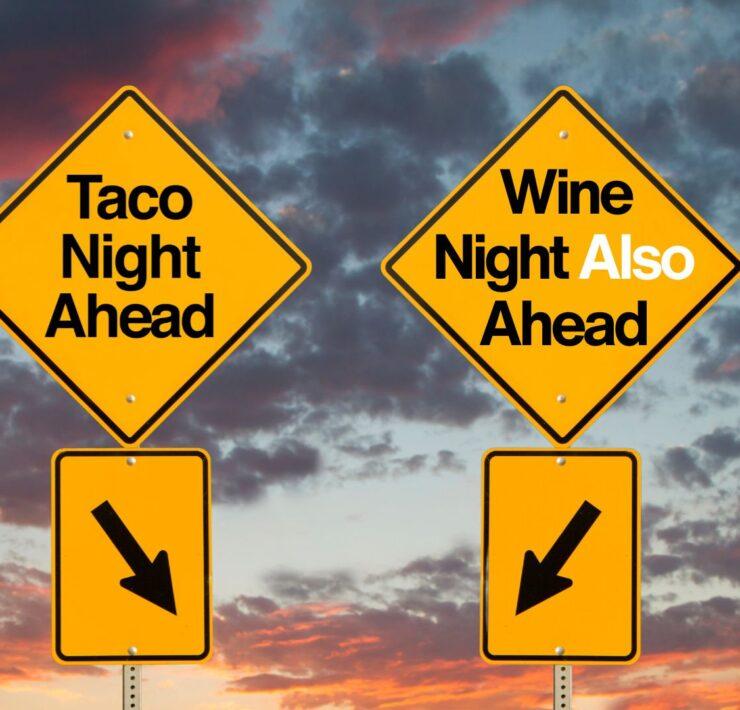Updated November 2023
Someone says ‘Rome,’ and a few things come to mind: the Colosseum, Trevi Fountain, or the Vatican, to name a few. Regarding food, there’s one dish, in particular, that the ancient city is famous for— Cacio e Pepe.
One place that delivers this mouthwatering minimal-ingredient dish night after night is Rimessa Roscioli. In the heart of Rome’s Regola neighborhood, Rimessa Roscioli is an institution and the star of SOMM TV’s most recent episode of Pairings.
Pairings is a one-of-a-kind show exclusive to SOMM TV subscribers, which takes viewers around the globe to meet the sommeliers and chefs of the world’s best restaurants. In episode two, we meet the team at Rimessa, led by founder Alessandro Pepe. “We have 3,000 different labels of wine, 45,000 bottles, and more than 500 different kinds of cheese and cured meats,” says Pepe when speaking about the extensive opportunity to taste through Italy.
The vast number of regional specialties led Pepe to hire head chef Tommaso Fratini. “He allowed me to do something different,” says Fratini. “This crazy guy (Pepe) told me, ‘This is going to be your job: go around Italy and find every single food that you think is the story of Italy. Like cheese, salami, pasta, and sauce. You have to know it, and you have to try it, and you have to speak about the food differently’.”

Cacio e Pepe is one specialty that the team at Rimessa has proven to master. Learn what makes this dish luxurious yet divinely simple. With more than 350 authorized Italian grape varieties, the restaurant’s sommelier team reveals which wine perfectly accentuates the dish’s characteristics.
How To Make Cacio e Pepe
“A good Cacio e Pepe is almost impossible,” says Pepe, “take some cheese and mix it with pepper — that’s Cacio e Pepe. But try to make it. It’s fu**ing hard.”
Chef Fratini elaborates slightly more than Pepe about the steps required to make the dish. In episode two of Pairings, he shares his recipe and technique for making this quintessentially Roman primo or first course.
| Ingredients |
|---|
| salt (for boiling water) |
| black pepper |
| Pecorino cheese |
| fresh pasta |
| extra virgin olive oil (for garnish) |
| Method |
|---|
| 1. Begin by toasting the black pepper in a pan on the stove. |
| 2. Add a generous amount of salt to a pot of boiling water |
| 3. Once you can smell the black pepper, ladle a scoop of salted water into the pan. |
| 4. Add fresh pasta to the salted boiling water and cook for 1-2 minutes. |
| 5. Drop the pasta (and a bit of the pasta water) into the pan with the black pepper. Continue cooking for 2-3 minutes until most of the water evaporates. |
| 6. Remove the pan from the stove and add a touch more pasta water along with a handful of Pecorino cheese. Mix to create creamy emulsification. |
| 7. Plate the pasta and garnish with additional Pecorino cheese, a drizzle of extra virgin olive oil, and additional fresh cracked pepper. |
Watch Chef Fratini make Cacio e Pepe in this clip from SOMM TV’s Pairings: Rimessa Roscioli.
Pairing Wine With Cacio e Pepe
“In Italy, food and wine pairings are the A-B-C of what we do,” says Lindsay Gabbard, co-founder and sommelier at Rimessa Roscioli. “We don’t just think about the food or the wine…we think about how this food will interact with the wine. It’s a 1-plus-1-equals-3 experience.”

Cacio e Pepe is a complex dish to pair with wine, mainly because of the pepper component. At Rimessa, they use Pepe Nero Sarawak, a spicy and lively pepper.
The other challenging part of this dish is the saltiness of the cheese. At Rimessa, they use Pecorino aged one year, which matches nicely with a medium-tannin wine. A wine with robust tannins, like a Nebbiolo, would be a better match for cheese with additional age, such as Parmesan, which typically ages 36 months.

Gabbard’s choice pairing comes from Northern Italy’s Prepotto region of Friuli Venezia Giulia. The lively acidity of Le Due Terre Schioppettino is a perfect match for the dish’s saltiness.
“You have violets, roses, black cherries, nice raspberries and black fruits, forest fruits,” says Gabbard, speaking about the wine’s diverse aromas. “My mouth is puckering right now, and that is the beautiful component that cuts through the richness of this dish.”
The chances of finding this exact wine in the U.S. are slim. For a similar pairing experience, opt for other light-bodied red wines from Italy. Italian Pinot Nero (Pinot Noir) is also a great option, with a more familiar profile.
For more about Cacio e Pepe and other Italian delicacies, watch Pairings: Rimessa Roscioli, now streaming on SOMM TV.
Not a subscriber? You can save 50% off an annual subscription using the code AUTUMN22 at checkout. Valid until September 30, 2022, for new subscribers only.









